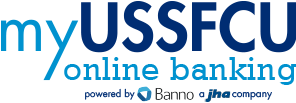Accepted! How to Decipher Your College Aid
By: Anna Helhoski, NerdWallet
Published: May 23, 2019

With college acceptances in hand, now comes the hard part: understanding your financial aid offers.
These letters are notorious for being laden with jargon that differs from offer to offer, making comparison difficult. But you can learn how to interpret award letters to understand the costs and choose an affordable option.
What to expect from aid offers
Financial aid offers should include all of the federal, state and school aid you can access. That could mean free aid, such as grants, scholarships and work-study opportunities, that doesn’t need to be repaid, and unsubsidized and subsidized federal loans, which do. If these aid types are grouped together without explanation, they can be hard to distinguish.
Your offer also might include a parent PLUS loan as part of the award, but avoid using it if possible. These loans have higher interest rates than loans made directly to students. And unlike typical student loans, only parents can take them on, and they require credit history to qualify.
Schools also must provide the cost of attendance, but that’s not the amount you owe. It bundles indirect costs like books, supplies and transportation, with direct costs such as tuition, fees, housing and food.
The cost of attendance is usually an average, says Brenda Hicks, director of financial aid at Southwestern College in Winfield, Kansas. Things like room and board could be pricier if you opt for a more expensive package, like a single room.
Why offers are difficult for students to read
Schools use different names to refer to the same type of loan.
For instance, one college’s aid offer might list a “Federal Unsub Stafford Loan,” and another school’s might say “DL Unsubsidized Loan.” But they’re the same thing.
Unsubsidized federal student loans are the only type of federal loan every student can access, regardless of financial need. They’re different from subsidized loans, which don’t accrue interest while the student is in school. Subsidized loans ease costs for students, which is why they’re given to those who demonstrate need.
But among 455 college aid award letters, there were 136 different names used to describe the federal unsubsidized loan, according to a 2018 study by New America, a nonpartisan think tank, and uAspire, a Boston-based college affordability nonprofit.
“How can we expect families and students to navigate this process if even the aid that everyone qualifies for is called something different?” says Rachel Fishman, deputy director for research with the education policy program at New America.
There are two main obstacles for colleges in standardizing offers, according to Fishman: There’s no legal standard for language in award letters, and schools use different software to manage aid.
In a push for more consistency, the U.S. Department of Education recently issued guidance on what schools should avoid, such as presenting the cost of attendance without a breakdown. There’s also bipartisan support in Congress to make aid offers more uniform, including two current bills.
Some colleges have tried to address the problem, but others continue to use the same format they’ve used for years, says Brendan Williams, director of knowledge at uAspire.
The financial aid office at the University of Nebraska Kearney overhauled its award letter last year, including color coding each aid type and providing an estimated net cost. Net cost is the cost of attendance minus free aid. It represents the amount that borrowers will have to cover.
Despite the changes, families still often want a walk-through, says Mary Sommers, the school’s financial aid director. “That’s OK, that’s our job,” she adds.
How to compare financial aid award offers
To compare financial aid award offers, experts recommend these steps:
- Create a spreadsheet with separate columns for each school.
- Under each column, start with the total cost of attending each school.
- List each award type and amount.
- Add all free aid together first and subtract from the total cost to attend.
Since you want to take all free aid first, what you have left is the amount you would need to cover with savings, income or loans. Compare this bottom-line amount with other schools on the list.
You can also use tools like the Consumer Financial Protection Bureau’s Compare Schools tool or the National Association of Student Financial Aid Administrators’ Award Notification Comparison Worksheet.
“Bottom line: I would encourage people to take a long look at that letter, read it all, make sure they understand it and reach out when they don’t,” says Hicks.
If it’s unclear how to accept one type of aid or reject another, contact the school’s financial aid office.
This article was written by NerdWallet and was originally published by The Associated Press.
More From NerdWallet
- College-Bound Students Could Face $37,400 in Loans. Here’s How to Ease the Load
- What It’s Really Like to Win Money to Pay Down Student Loans
- What Students Can Learn From the Days Before College Loans
Anna Helhoski is a writer at NerdWallet. Email: [email protected]. Twitter: @AnnaHelhoski.
The article Accepted! How to Decipher Your College Aid originally appeared on NerdWallet.




